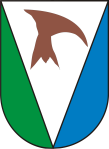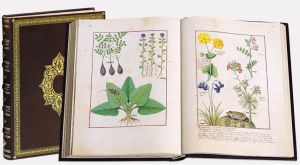
 We had a quiet week with most projects just progressing, rather than getting finished. A lot of what needed to happen was re-set, like getting things put away. Stella came up with a new largesse project that you can see on her head in the pictures below.
We had a quiet week with most projects just progressing, rather than getting finished. A lot of what needed to happen was re-set, like getting things put away. Stella came up with a new largesse project that you can see on her head in the pictures below.
This week’s meetings are at the usual times and we have our Potluck on Sunday since none of us are heading for KA&S.
- Sewing Night – At Ancient Light, Thursdays, 6-8pm
- Herb Bunch – At Ancient Light, Saturdays, 11am-1pm
- Sewing Time – At Ancient Light, Saturdays, 3-5pm
- Project Day – At Ancient Light, Sundays, Noon to 6pm
- Next Potluck – 3/12
Here is the direct Portfolio link which has all the past Project Day reports and various projects, original here: https://housecapuchin.wordpress.com/portfolio/ and new one here: https://housecapuchin2.wordpress.com/portfolio/ and number three is here: https://housecapuchin3.wordpress.com/portfolio/

Early Week – ….was all unpacking and getting results sent off the entrants to the Summits A&S Championship from last weekend, but then Jay and Anja started on the herbal stuff. Loren got reminded about his bone needles and away we went on more things.

Sewing Time – Was Estrella, Amy and Anja. Stella was working on a dress, Anja worked first on the thingy bag and then rolls of black fabric for the flowerpot pincushions and she got to show off her scrolls. After that she tried to get one of the flowerpot pincushions done, but overfilled it and tug as she might it wasn’t going into the flowerpot. Need to do some measuring on that….

Herb Bunch – …actually started early in the week since Jay came in a couple of times to help out at Anja and Loren’s shop. He made eggshell fertilizer and got it poured on the bulbs in the bulb beds. On Saturday, the regular workshop worked on grinding cedar for pincushion filling. That also entails sifting both sand and sawdust, which ends up with coarser stuff for ball filling and the finer for pincushions.

Project Day
We started with cleaning up and putting away some of the feast gear that’s been sitting and getting some pictures of things that have been in progress. Anja set to work on a spoon, finished the carving and shaping, and was well into the sanding process by the end of the afternoon.
We had a good long talk about feast music, about A&S projects and largesse, and spoon carving during the afternoon. Loren was working on a bone needle again and Estrella showed off her new hat!
Spoon Progress

Miscellaneous pix

Music
A commercial-free option – http://www.ancientfm.com/ Their shockwave player works wonderfully or you can run in Windows Media!

…and thimbles (I’ve missed a few, so this is catch-up….)
- http://eirny.com/2017/01/16/thimbles-part-1/
- http://eirny.com/2017/01/23/thimbles-part-2/
- http://eirny.com/2017/01/30/thimbles-part-3/
- http://eirny.com/2017/02/06/thimbles-part-4/
- http://eirny.com/2017/02/13/thimbles-part-5/
- http://eirny.com/2017/02/20/thimbles-part-6/
- http://eirny.com/2017/02/27/thimbles-part-7/

 THE BOOK OF SIMPLE MEDICINES
THE BOOK OF SIMPLE MEDICINES
National Library of Russia, St Petersburg
Le Livre des simples médecines (The book of simple medicines) of the Russian National Library, St Petersburg, is a remarkable codex not only because of its outstandingly beautiful illustrations but also because it is the culmination of European medieval knowledge of the animal, vegetable and mineral substances used to cure or relieve disease.
This knowledge originated in classical antiquity. The books on medicine in Greek of that period were recuperated in Europe by means of indirect Latin translations from Arabic with the addition of remedies from the Islamic world. These translations were begun in the 11th century, initially in the city of Salerno. Working on such translations in the mid 12th century was Matthaeus Platearius, the physician to whom De medicinis simplicibus (“On simple medicines”), the most important and influential Salernitan compendium on this subject, was attributed.
 The codex housed in St Petersburg was produced in France in the late 15th century for Count Charles of Angoulême and his wife Louise of Savoy. It consists of 220 pages divided into five parts: herbs and flowers, trees and their gums and resins, metals and minerals, animal products and other matters. It is followed by a splendid, 116-page atlas with 386 figures. The core of the text is the French translation of the compendium attributed to Matthaeus Platearius, with the addition of chapters from works of the following three centuries, a period when the knowledge of medicinal substances increased, based on the translations produced mainly in Toledo.
The codex housed in St Petersburg was produced in France in the late 15th century for Count Charles of Angoulême and his wife Louise of Savoy. It consists of 220 pages divided into five parts: herbs and flowers, trees and their gums and resins, metals and minerals, animal products and other matters. It is followed by a splendid, 116-page atlas with 386 figures. The core of the text is the French translation of the compendium attributed to Matthaeus Platearius, with the addition of chapters from works of the following three centuries, a period when the knowledge of medicinal substances increased, based on the translations produced mainly in Toledo.
The atlas is similar in certain respects for its author – in all likelihood the great artist Robinet Testard – gathered together medieval illustrations of a diagrammatic nature or bearing no resemblance to reality with other realistic illustrations belonging to the Renaissance “back to nature” movement. Most of them depict medicinal plants and, to a lesser extent, curative animal or mineral products, although some scenes  portray people gathering them. Examples of such scenes are found in the figure entitled “Aloe”, which does not refer to the aloes that bitter aloes are obtained from but to lignaloes, i.e. wood saturated in agalloch resin, often substituted in that period by aloe resin. The other three depict gold, alum and antimonite being collected (antimonite was used at that time as a desiccative medicine).
portray people gathering them. Examples of such scenes are found in the figure entitled “Aloe”, which does not refer to the aloes that bitter aloes are obtained from but to lignaloes, i.e. wood saturated in agalloch resin, often substituted in that period by aloe resin. The other three depict gold, alum and antimonite being collected (antimonite was used at that time as a desiccative medicine).
Another interesting feature of this codex is the annotations, like those to be seen on these two pages, by two physicians who handled the codex in the 16th century. They were both of a clearly Renaissance outlook and had editions in Greek and direct Latin translations of books on medicine from classical antiquity. They consequently deemed the original terms of the codex to be “barbaric” and added others in Greek and Latin, sometimes together with comments.
José María López Piñero (†) (López Piñero Institute for the History of Medicine and Science, Universidad de Valencia – Spanish National Research Council)
– Shelf mark: FP. Fv VI #1.
– Date: 15th C.
– Size: 260 x 355 mm.
– 340 pages, with a splendid atlas containing 386 illustrations.
– Bound in brown leather with gold decoration.
– Leather case.
– Commentary volume (432 p.).
– ISBN: 978-84-88526-69-4
http://bit.ly/Simple_Medicines

Funnies

Loren, Anja, Jay, Stella, Amy
Largesse Item Count – (includes gifts, prizes, auction items, etc.)
- ASXLVII = 24
- ASXLVIII = 88
- ASXLIX = 794
- ASL = 2138
- ASLI = 725 plus 3 sewing box (in process), 13 pincushions, varnished stuff (124), 3 hats
- Total as a Household = 3353 handed off
 In ministerio autem Somnium! Anja, graeca doctrina servus to House Capuchin
In ministerio autem Somnium! Anja, graeca doctrina servus to House Capuchin
Page Created 2/26/17 & published ??/??/17 (C)M. Bartlett
Last updated 3/5/17







































Leave a comment